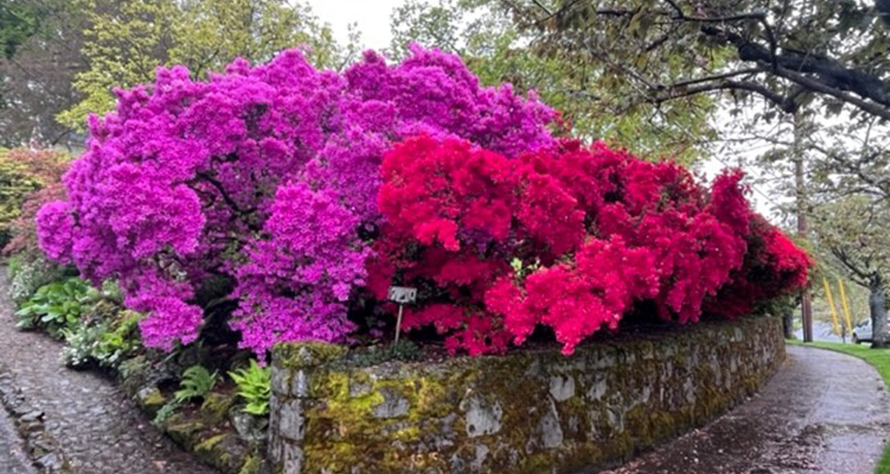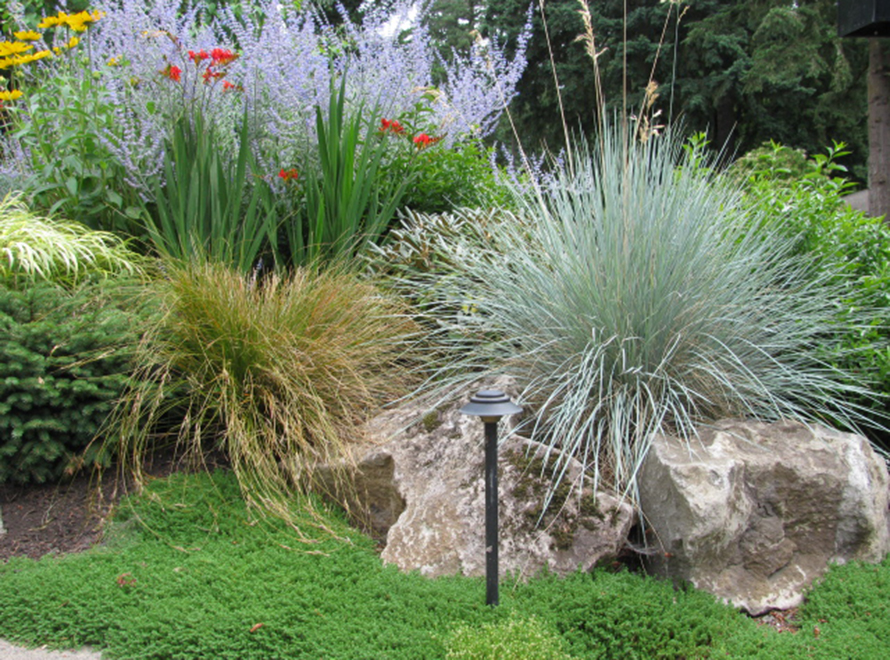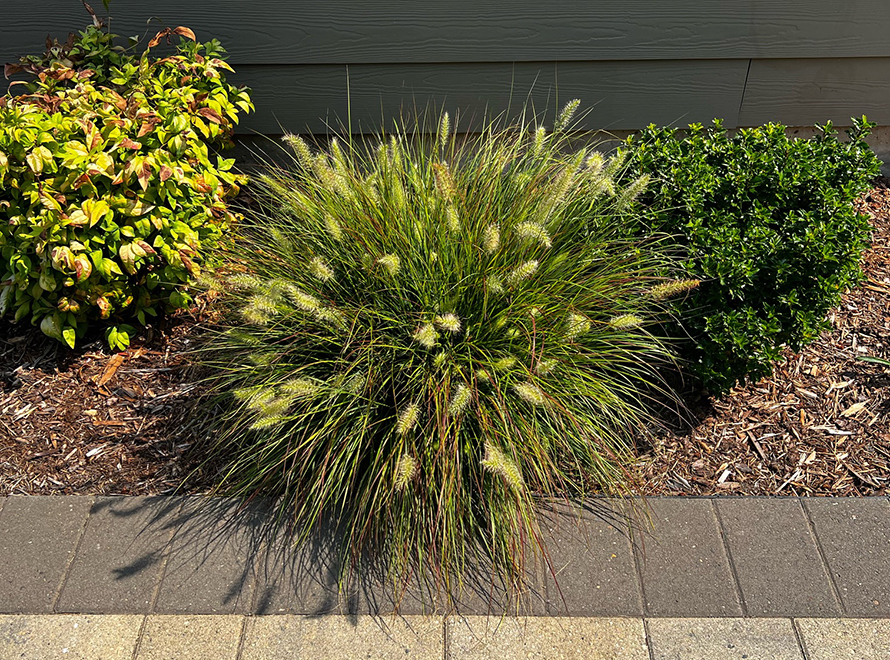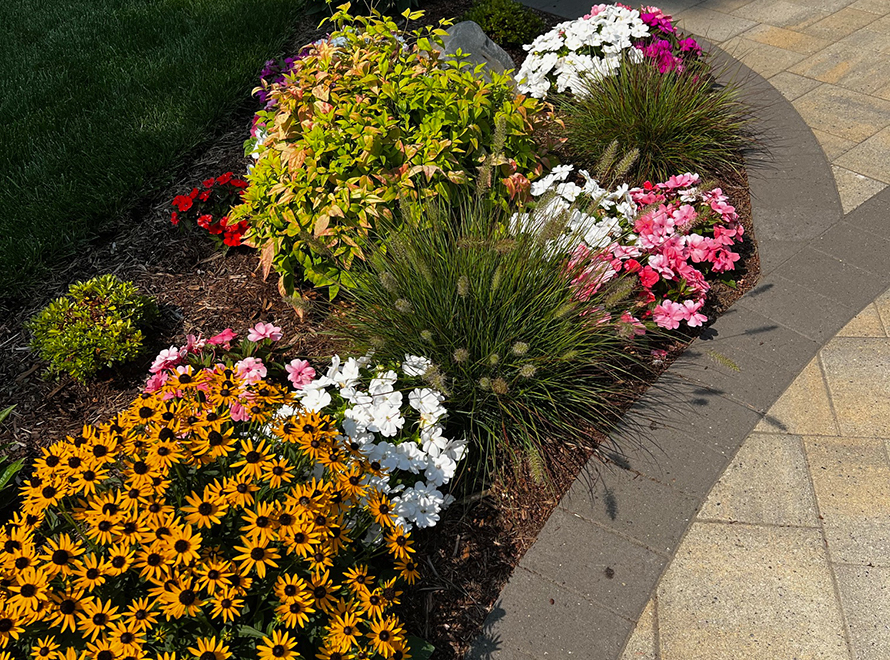Plant Selection Tips for Year-Round Beauty

Our part of the Pacific Northwest is officially designated as zone 8 or 9 for plant growth and hardiness. That zone designation considers the average temperatures and rainfall over several years but as we well know, there is no such thing as an average year anymore. Those extreme heat spells, ice storms, and extended dry periods are anything but normal making it challenging to select the right plants for your Oregon yard. However, at Landscape East & West we have some tricks of the trade to ensure whatever you put in the ground has the best chance of survival.
We say this often, but every yard is unique and the best way to ensure you select the right plants for your space is to understand the microclimate you live in. Assess how much sun your yard receives and at what time of day. Do you have shade trees that lose their leaves in the winter or fir trees that may provide some cover year-round? Do you have sweeping views that also funnel in the wind? Trying to have a thriving lawn on a wooded lot is not going to work well. Nor is a dream of banks of hydrangeas in a yard that gets direct, all-day summer sun. There are always beautiful and functional alternatives to help you achieve the formal, Japanese, English Country, or rain garden you desire.
Your soil also plays a role in what plants will thrive. The greater Portland area can have clay, loam, or even sandy composition and ground packed with rocks or roots. Do a little digging to learn what lies underground. It also pays to determine the pH. Ideal for most plants is soil that’s slightly acidic or neutral. Overly acidic or alkaline soils prevent plants from receiving the nutrients they need to grow. We’re happy to help you test your soil and ensure your plant selection is in tune with what you plant it in.
Native Plants
We encourage our clients to use native plants where possible. It just makes sense to plant what you know has survived in the Portland area climate forever. Native plants will require less maintenance because they are well-adapted. Plus they support local wildlife. There’s a reason those Certified Backyard Habitat signs you see in neighbor’s yards are filled with native plants. For our area, these can include Oregon Grape, Red-Flowering Currant, Pacific Bleeding Heart, Sword Fern, and, of course, Douglas Fir. The experts at Landscape East & West are familiar with all the native species of this area and the best environment to place them.

Pollinator Friendly Plants
Another way to support wildlife is by planting pollinator plants that attract bees and butterflies. Pollinators are a critical component of not just our ecosystem, but our economy. All that pollinating is what keeps Oregon’s agricultural industry thriving. You can do your part by adding more feeding stops for them by planting, Pacific Ninebark, Red-Osier Dogwood, Bee Balm, and Lupine. Plus, who doesn’t like seeing flitting butterflies in their yard?
Drought Tolerant Plants
We’ve been in Oregon our whole lives so we’re old enough to remember when warm, dry summers didn’t start until after the Fourth of July. We hope those days are not long gone, but we seem to see higher temperatures and less rainfall each year. Not only can this wreak havoc on your plants, but the need for extra watering can skyrocket your utility bills.
To compensate, select drought-tolerant plants. As the name implies, these plants can live with limited water. The good news is cacti are not the only option, although there is a space for them as well. Lavender, Russian Sage, and Echinacea can add life to your yard, as well as some color and even scent.
Ground Cover
If you have a spot in your yard where nothing seems to grow consider planting groundcover or ornamental grasses. Grasses especially thrive in our Northwest climate. These plants are excellent for covering bare spots and preventing soil erosion and can tolerate poor soil conditions. For areas of full sun and drought try Creeping Thyme or Stonecrop. Too much shade? Plant Ajuga, also known as Bugleweed.

Evergreens
For year-round color and structure in your yard, turn to evergreens. In the middle of a dreary winter day, it’s nice to look out and see some green to remind you that there is life outside your door. For a more formal look choose boxwoods that can be maintained in any shape and grow thick enough to act as a barrier between different spaces in your yard or even to block the view of your neighbor’s yard. Other options are Rhododendron, Ilex Crenata, or Portuguese laurel.
Annuals or Perennials
In our climate, both options can work well so this comes down to other factors like care and how frequently you want to change the look of your yard.
Once established, perennials require minimal care and they return year after year. Plus they can thrive in most soil types. Because they are consistent you can plant perennials that bloom at different times throughout your yard to ensure year-round color and flowers. Choose hostas, ferns, and lavender.
Annuals are a bit more finicky about the soil they’re planted in and require more watering and fertilizer. But to easily add splashes of color in the spring, summer, and even fall, you can’t beat annuals. Annuals allow you to change the look of your yard whenever you’d like. Marigolds, sunpatiens, impatiens, and begonias offer bright seasonal colors.

Seasonal Interest
The best yards are the ones that look inviting year-round. Choose plants that offer visual interest no matter what the season. Consider the foliage, flowers, and bark of the plant and how it will look as the weather changes. We mentioned Rhododendron is a good option for an evergreen but they have that bonus of beautiful flowers in the spring. Hydrangea and Lilac are popular choices for spring and summer blooms and they still look good in the colder months. Japanese Maple, Witch Hazel, and Camelia peak in the fall and winter. A combination of these plants ensures a yard worthy of admiration from January to December. And isn’t that always the goal?
As you start selecting plants for your yard, look through the photo gallery on our website for ideas. If you prefer some expert help to make your yard a flourishing sea of plants, shrubs, and trees, contact us for a free consultation.

